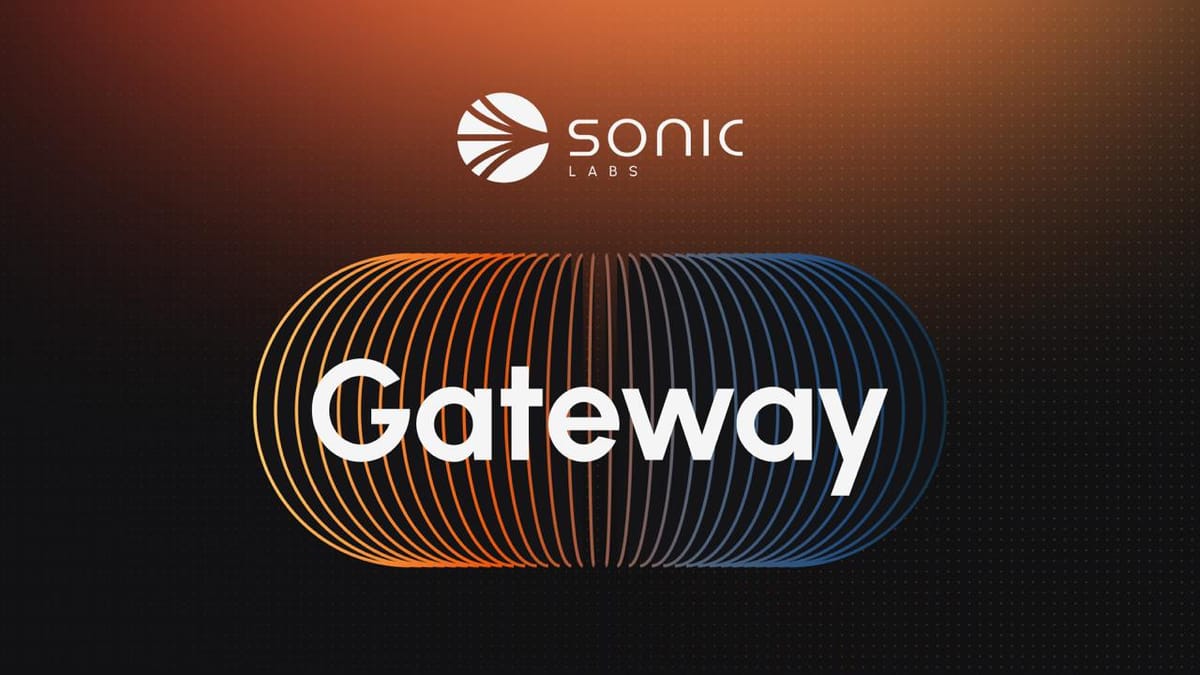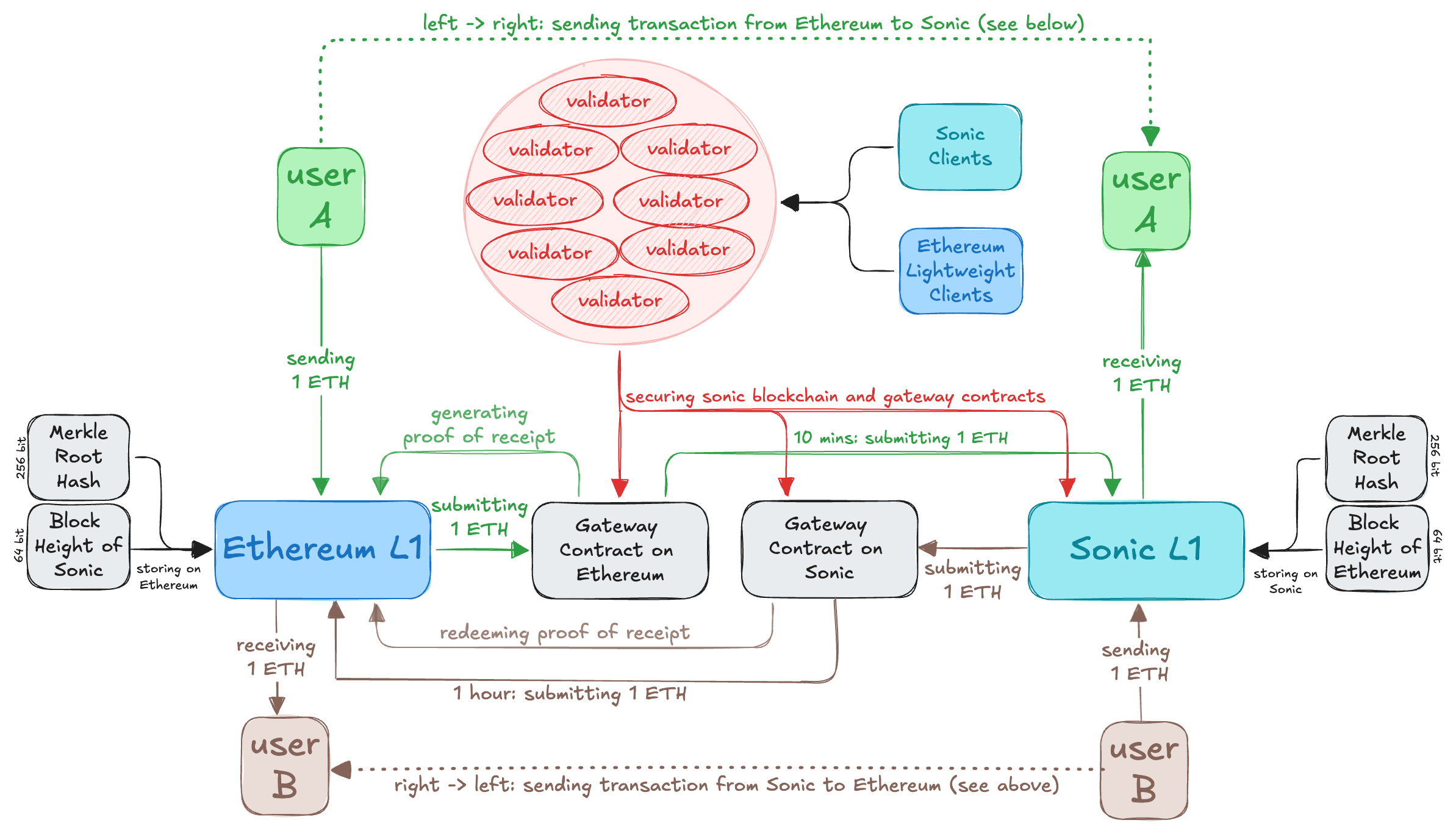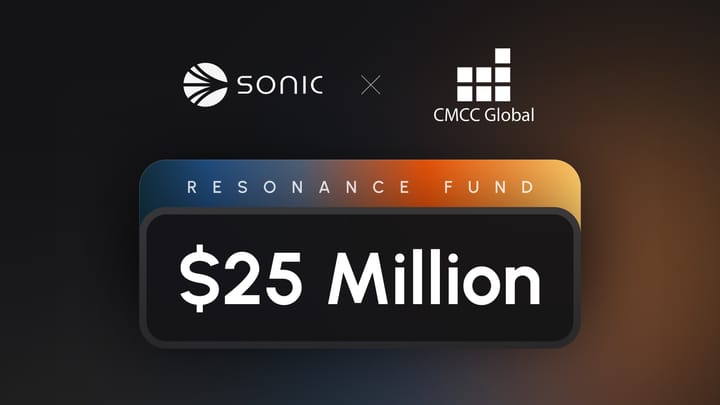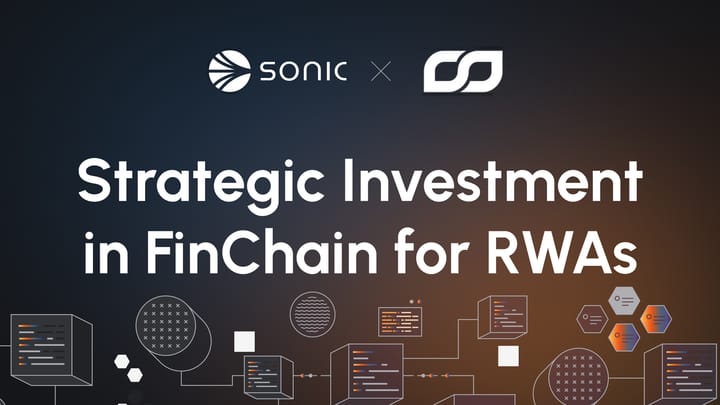Sonic Gateway — Native Bridge for Secure Ethereum Transfers

TL;DR
- Sonic Labs introduces the Sonic Gateway, a secure bridge between Ethereum and Sonic, eliminating custody risks.
- The Sonic Gateway uses Sonic’s validator network for secure ERC-20 token transfers, with users retaining full control over their funds at all times.
- Transfers take up to 10 minutes from Ethereum to Sonic and up to 1 hour from Sonic to Ethereum.
- A fail-safe mechanism allows users to retrieve assets on Ethereum if the Gateway fails for 14 days.
- Unlike layer-2 solutions with a 7-day challenge period before achieving finalization, Sonic and its gateway offer faster and safer transfers without the risks associated with multi-signature bridge protection for Ethereum assets.
Introduction
In the evolving blockchain landscape, a native, secure bridge is essential for a healthy ecosystem, enabling robust interoperability and preventing networks from being siloed.
However, current layer-1 and layer-2 solutions often force users to compromise on security and speed, relying on systems that expose funds to significant risks — over $2.5 billion has been lost already due to bridge hacks.
Recognizing these systemic threats, we had simple goals in mind for our bridge:
- Security: Ensure safety with a built-in fail-safe mechanism.
- Speed: Provide a smooth user experience for easy asset bridging.
We’re excited to introduce the Sonic Gateway — a revolutionary, secure bridge between Ethereum and Sonic that fulfills the three goals above simultaneously.
With a built-in fail-safe mechanism, the Sonic Gateway provides asset security, safeguarding your funds under all circumstances.
Sonic Gateway
The Sonic Gateway is our secure bridge that facilitates ERC-20 token transfers between Ethereum and Sonic.
The Sonic Gateway is designed for efficiency. Transfers from Ethereum to Sonic only take up to 10 minutes, while transfers from Sonic to Ethereum take up to 1 hour.
See the illustration below for a visual overview of bridging assets from Ethereum to Sonic.

Gateway Fail-Safe Mechanism
The Sonic Gateway has a built-in fail-safe mechanism with which users can retrieve their bridged assets on the original chain in the unlikely case that Sonic or its gateway experiences a failure.
This fail-safe mechanism activates after 14 consecutive days of failed gateway operations, serving as a safeguard for users transferring assets from Ethereum to Sonic. Designed as a form of insurance, the 14-day fail-safe period is immutable, meaning it cannot be altered by Sonic Labs or any other third-party entity once the Sonic Gateway is deployed.
Importantly, this period is not intended as a contest period but rather as an essential feature that ensures users retain custody of their bridged funds on the originating chain.

How the Fail-Safe Works
The Sonic Gateway transmits heartbeats between the chains, which include each blockchain's Merkle root and block height. If the heartbeat ceases for 14 days, it signals that the Gateway has failed, allowing users' funds to be unlocked on Ethereum.
Only assets routed through the Sonic Gateway can be recovered. The 14-day duration serves as a buffer period to address any issues with the Gateway before it is deemed unusable.
Sonic vs. Layer 2s
Most layer-2 platforms are optimistic rollups that operate on the assumption that all withdrawals are valid unless contested (hence the name “optimistic”). To ensure security, a 7-day challenge period is in place, allowing anyone to verify and dispute withdrawal claims made on the Ethereum mainnet.

For example, if you wish to withdraw 2 ETH from Optimism to any other platform, the assets won’t actually be released on Ethereum until the 7-day challenge period has passed. So why does a transfer from platforms like Arbitrum and Optimism to an exchange like Binance only take a few minutes?
When depositing from an optimistic rollup to an exchange like Binance, the transfer may appear quick, but the exchange is assuming the risk associated with the challenge period; this is because Binance trusts most layer-2 platforms.
However, the funds credited to your account by the exchange aren't technically secure until the 7-day challenge window closes, meaning the exchange bears the risk during this period.

In contrast, Sonic, as a layer-1 platform with its own secure validators, offers instant transfers to exchanges without the associated risk, as these transactions aren't subject to any challenge period, which includes USDC if it becomes native on Sonic.
Additionally, assets bridged from Ethereum through the Sonic Gateway finalize within an hour, offering a much faster and safer alternative compared to the 7-day challenge period required by most layer-2 solutions.
Comparison With Other Chains

Sonic Gateway Visualizations
Check out the simple visualizations below that illustrate the process of bridging from Ethereum to Sonic or from Sonic to Ethereum using the Gateway.


Looking Into the Future
Unlike layer-2 platforms, which are entirely dependent on Ethereum and thus limited in interoperability, the Sonic Gateway propels Sonic into a promising, interconnected future.
By enabling canonical access to native assets from other layer-1 platforms, the Gateway fosters a secure and thriving economy on the Sonic network. Users can directly access these canonical assets on Sonic while maintaining asset security.
The Sonic Gateway thus provides safe access to high-demand assets that natively exist outside the Sonic network, such as BTC, ETH, SOL, and more.
Frequently Asked Questions
Does the Sonic Gateway also secure third-party bridges?
No, only assets bridged through the Sonic Gateway are secured by the fail-safe mechanism. Additionally, if a user spends the tokens bridged through the Sonic Gateway, e.g. by swapping to another token, these tokens may not be recoverable. In the future, Sonic Labs may provide specific recovery mechanisms for some financial protocols on Sonic.
Does Sonic rely on the state of Ethereum?
No, Sonic operates independently as its own layer-1 platform and does not rely on Ethereum’s state. Instead, the Sonic Gateway uses Merkle proofs on both Ethereum and Sonic to verify the rightful owners of bridged assets. These assets can be redeemed on Ethereum by their rightful ownership regardless of the Sonic Gateway’s status.
Does Sonic store data on Ethereum?
L2 platforms store their transactions on Ethereum, using methods like blobs, which allow these transactions to be reconstructed and contested. This is crucial for resolving any security issues that may arise after the transaction is submitted by the user (e.g. if a transaction is challenged during the 7-day period). However, this approach leads to substantial storage demands on Ethereum, costing millions annually.
Our approach is more efficient as we store only a Merkle root hash (256-bit) and the block heights of both blockchains (2x64-bit) at regular intervals (e.g. hourly) through the Sonic Gateway, which uses Sonic’s own trusted validator set. This significantly reduces data storage, requiring only about 1 KB per day (or 407 KB per year).
Note: We don’t retain previous hashes; each new update through the Sonic Gateway overwrites the existing hash and block heights in the Gateway’s smart contracts. The full historical states and transactions remain accessible via an untrusted channel as an archive node.



